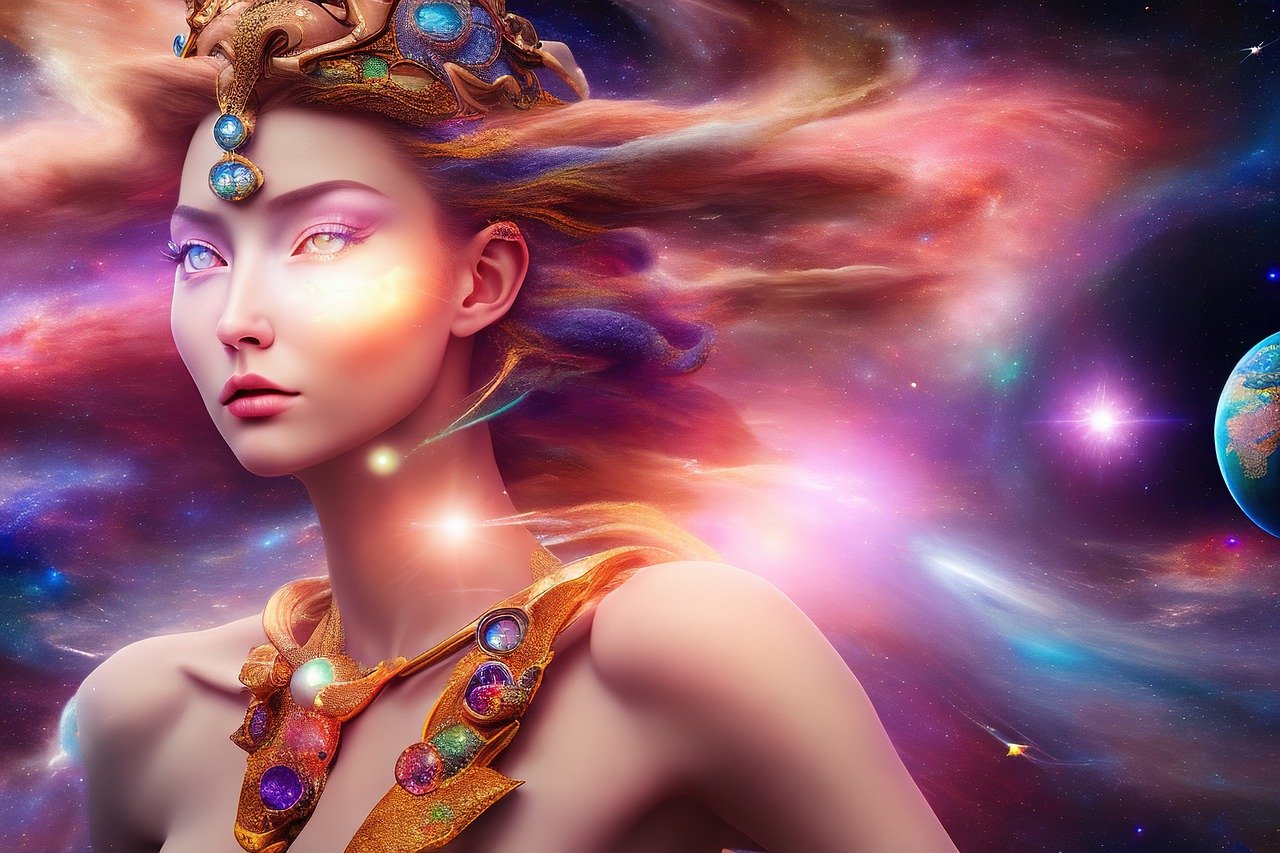Ran, the personification of the sea, stands out as one of the most formidable goddesses in Norse mythology. Together with her jötun spouse, Aegir, she embodies the ocean’s fierce powers, responsible for summoning storms and claiming the lives of many sailors who dare to traverse her waters.
Even today, little is known about Ran’s origins, which perhaps contributes to the respect—or fear—she commands. Whether crossing the vast ocean or even navigating through rivers, one could encounter her with a net at the ready.
Overview of Ran
- Parents: Unknown
- Partner: Aegir
- Siblings: None identified
- Children: Nine daughters also known as the Waves
- Tribe: Possibly Aesir or Vanir
- Old Norse Name: Rán
The Essence of Ran’s Name
The origin of Ran’s name is as fascinating as her mythological significance; in Old Norse, “Rán” means “robbery,” “theft,” or “plunder,” a meaning that persists in modern Norwegian. This interpretation indicates how she was perceived—an entity who ‘robbed’ sailors of their lives through her insatiable grasp. Beyond a simple act of theft, her name symbolizes a deeper truth about the cycle of life and death, portraying her as a goddess of the sea to be approached with caution and reverence.
Mysterious Background
While ancient texts offer limited insights into Ran’s ancestry, it is clear she is a goddess. The ambiguity surrounding her lineage—whether from the Aesir or Vanir tribes—hints at her elusive nature. Personally, one might lean towards her being affiliated with the Vanir, mainly due to the scant information available about her compared to other known figures from this tribe.
The Art of Kennings
Kennings enhance the poetry of Old Norse language by substituting straightforward terms with rich, metaphorical phrases. In the context of Ran, these kennings both obscure and illuminate her influence—a duality inherent to her essence. For instance, referencing the sea as the “Husband of Rán” evokes the union of Aegir and Ran, mirroring their interconnectedness.
Ran’s Family Ties
Ran’s familial connections stretch as wide as the ocean she oversees. With Aegir, she has nine daughters, each representing a unique aspect of oceanic behavior:
1. Himinglæva: “That through which one can see the heaven,” symbolizing tranquil waters.
2. Dúfa: “The Pitching One,” depicting the unpredictable rise and fall of waves.
3. Blódughadda: “Bloody-Hair,” perhaps a nod to the hues of twilight on the water’s surface.
4. Hefring: “Riser,” showing the ocean’s swelling might.
5. Udr: “Frothing Wave,” which portrays the cresting ocean.
6. Hrönn: “Welling Wave,” representing the building strength before a crash.
7. Bylgja: “Billow,” the quintessential shape of powerful waves.
8. Dröfn: “Foam-Fleck,” illustrating the playful foam atop waves.
9. Kólga: “Cooling One,” perhaps relating to the bone-chilling sensation of the sea.
Beyond these daughters, intriguing connections extend to Heimdall, the vigilant guardian of the gods. He is said to be born of nine mothers; this fascinating parallel raises questions about familial bonds and the nature of divine kinship in Norse mythology.
Ran’s Role in Mythology
Ran embodies the ocean’s dual nature—while Aegir is often viewed favorably as a provider of abundance, Ran represents the sea’s perilous aspects. Aegir’s realm is celebrated for its feasts, showcasing the sea’s ability to sustain, whereas Ran’s domain is characterized by treachery and loss, capturing souls who fall to the sea’s wrath. Her net—a powerful symbol—reminds us of her dominion, drawing the lost into her depths rather than harvesting the sea’s bounty.
The Significance of Her Artifacts
Ran’s most prominent artifact is her net, signifying her control over watery realms and her ability to ensnare the souls of those who perish at sea. This net evokes enduring power and respect, with its presence even felt in myths beyond her own—like when Loki borrowed it for his schemes.
Ancient Text References
Ran is frequently referenced in the Prose Edda, particularly in Skáldskaparmál where she is integral to skaldic poetry and kennings related to the ocean. Her portrayal there emphasizes her ties with Aegir and their daughters, reinforcing the ocean’s wealth while acknowledging her more ominous role in the fate of sailors.
In the Poetic Edda, she is again mentioned, displaying her formidable nature. Lines refer to her attempts to ensnare sailors, showcasing her revered status among the divine.
Conclusion
Ultimately, Ran’s legacy is multi-faceted—she serves as a reminder of the sea’s beauty and terror, illustrating the intricate balance of life and death within her realm. While her end during Ragnarok remains uncertain, her mysterious nature guarantees her a pivotal place in the tapestry of Norse mythology.



